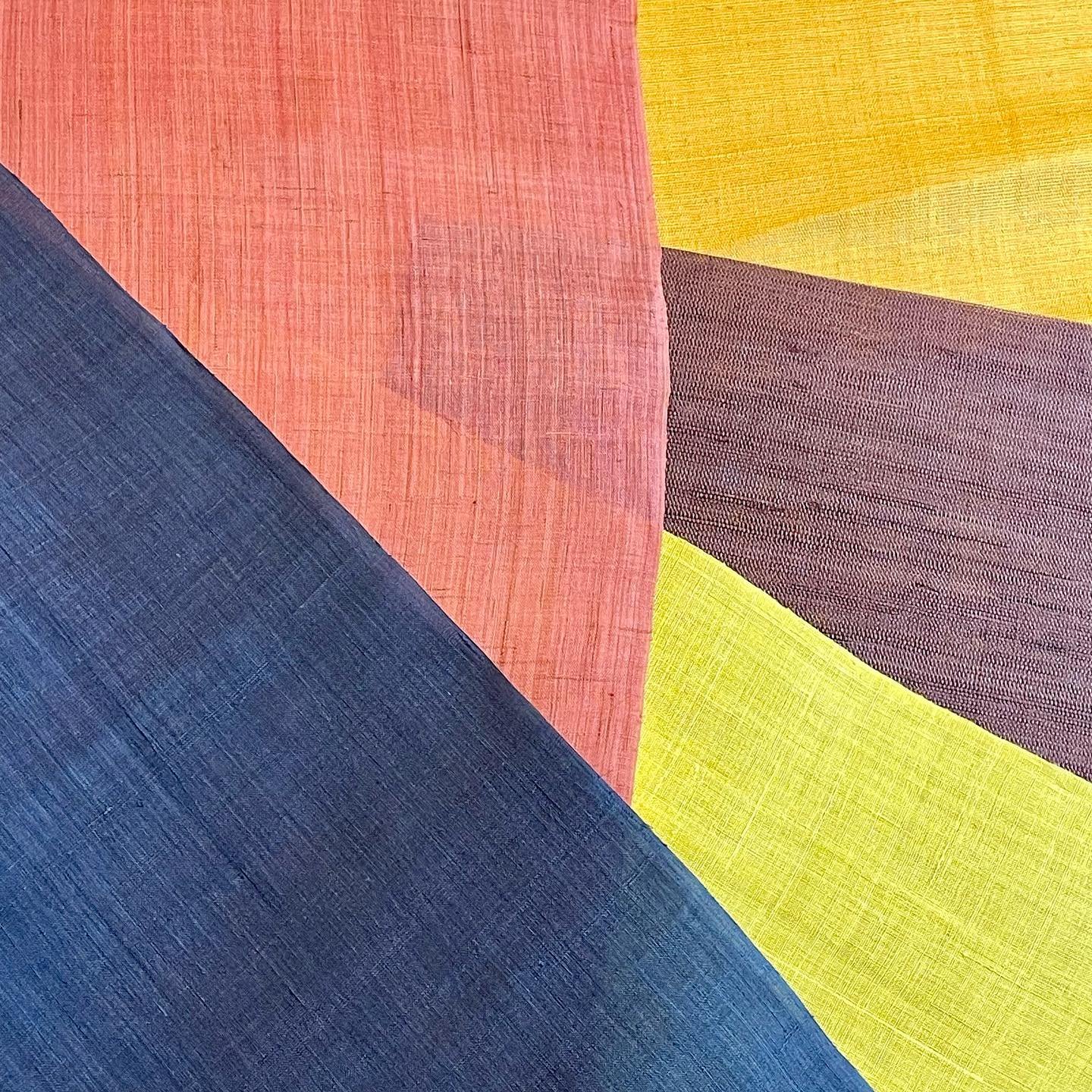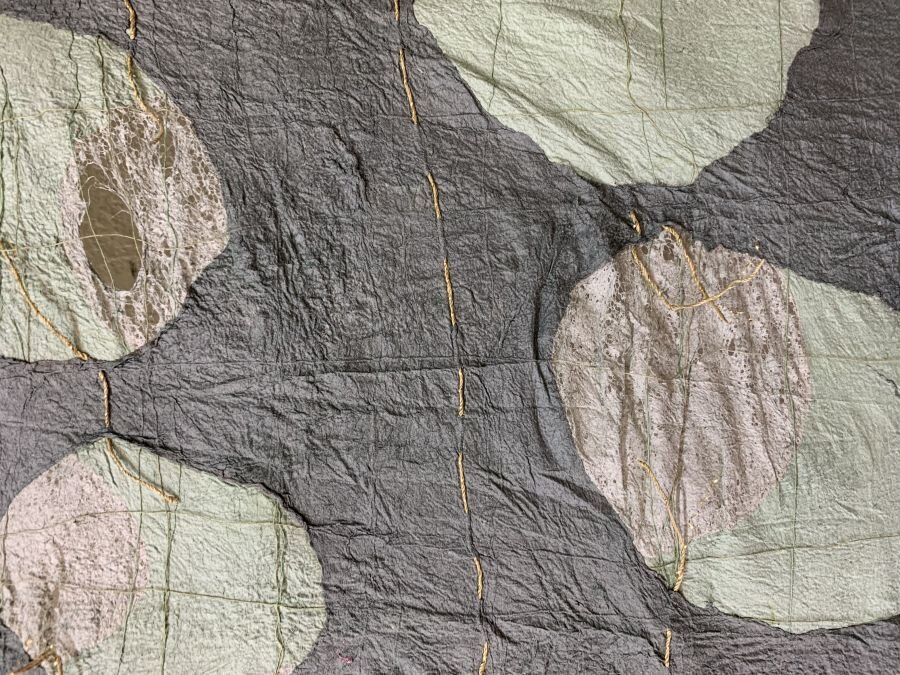Paper mulberry art in Hawaii and Korea
Kapa and hanji, or Korean handmade paper, share the same primary source material (paper mulberry tree), as well as similar processing methods and meaningful cultural applications. For instance, both kapa and hanji were traditionally used to make necessary items such as clothing and also used during rituals and ceremonies.

Kapa hui community
From the beginning, my kapa journey has been imbued by a strong sense of connection and belonging. Kumu Roen’s welcoming nature and generosity of spirit creates a nurturing space for her students to flourish.
Joomchi and kapa
For joomchi, a Korean method of texturing paper, I layer sheets of hanji (Korean handmade paper), which is made from dak (paper mulberry), the same source fiber as kapa. I wet and felt the hanji by agitation with my hands, folding the layers and beating them with wooden rods or dowels.
To make kapa, the inner bast fiber is first beaten on stone or wooden anvils with wooden beaters. The fiber is then felted using beaters by layering wetted, previously beaten fiber. During both processes, the stiff material transforms into a soft, flexible and yet stronger form, and holes are created in the cloth-like material.

Metaphorical process
The process for joomchi and kapa offers a compelling metaphor for life. Even as we get broken down or beaten up in life, we survive and can be transformed into stronger, more flexible and softer beings. The holes created during the processes are like spaces for breath and ventilation, places where possibilities for change to occur.



